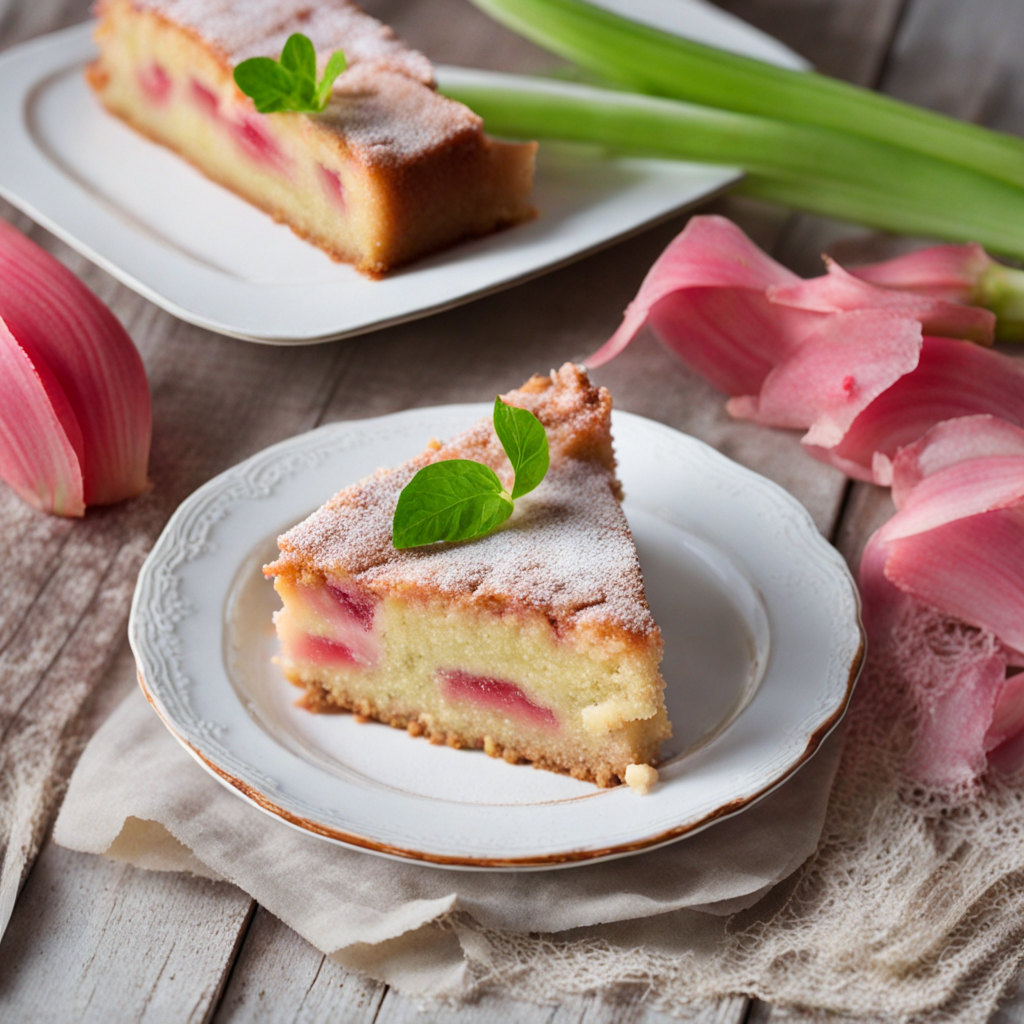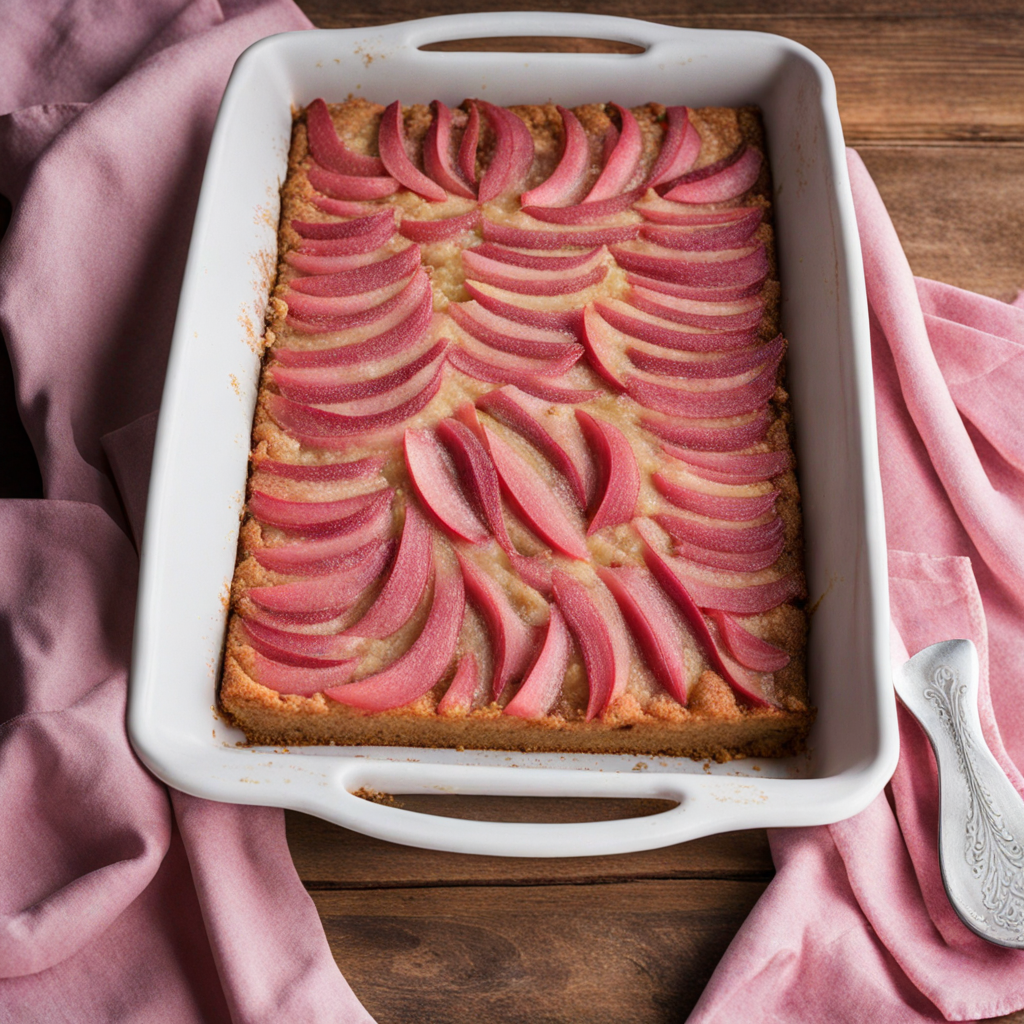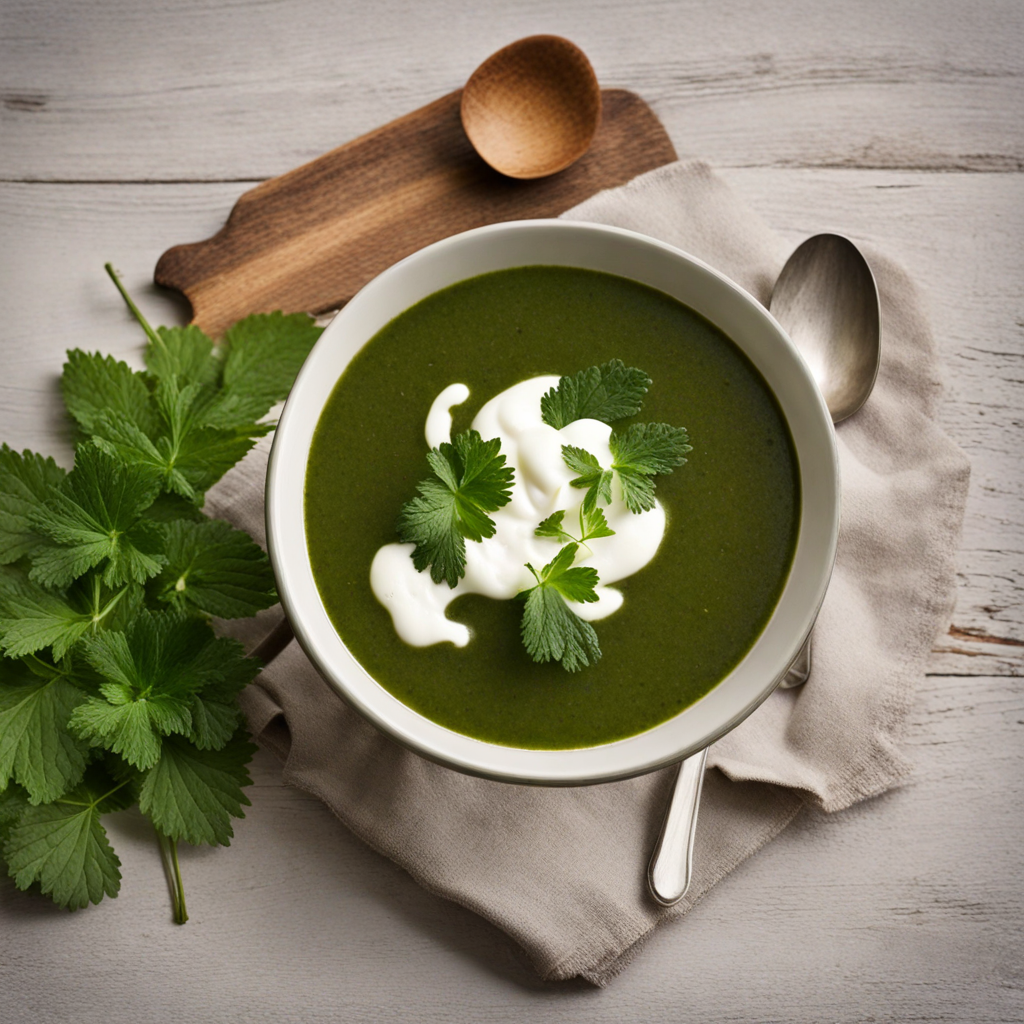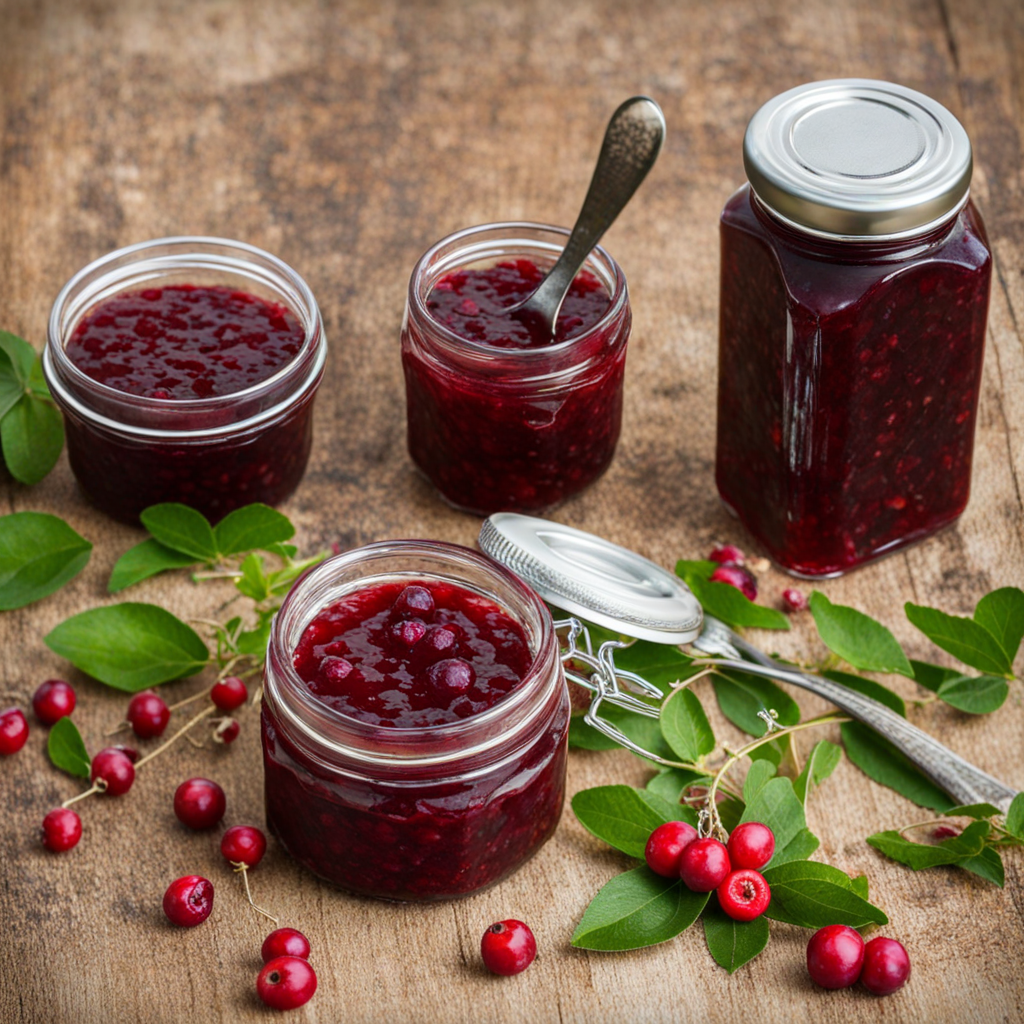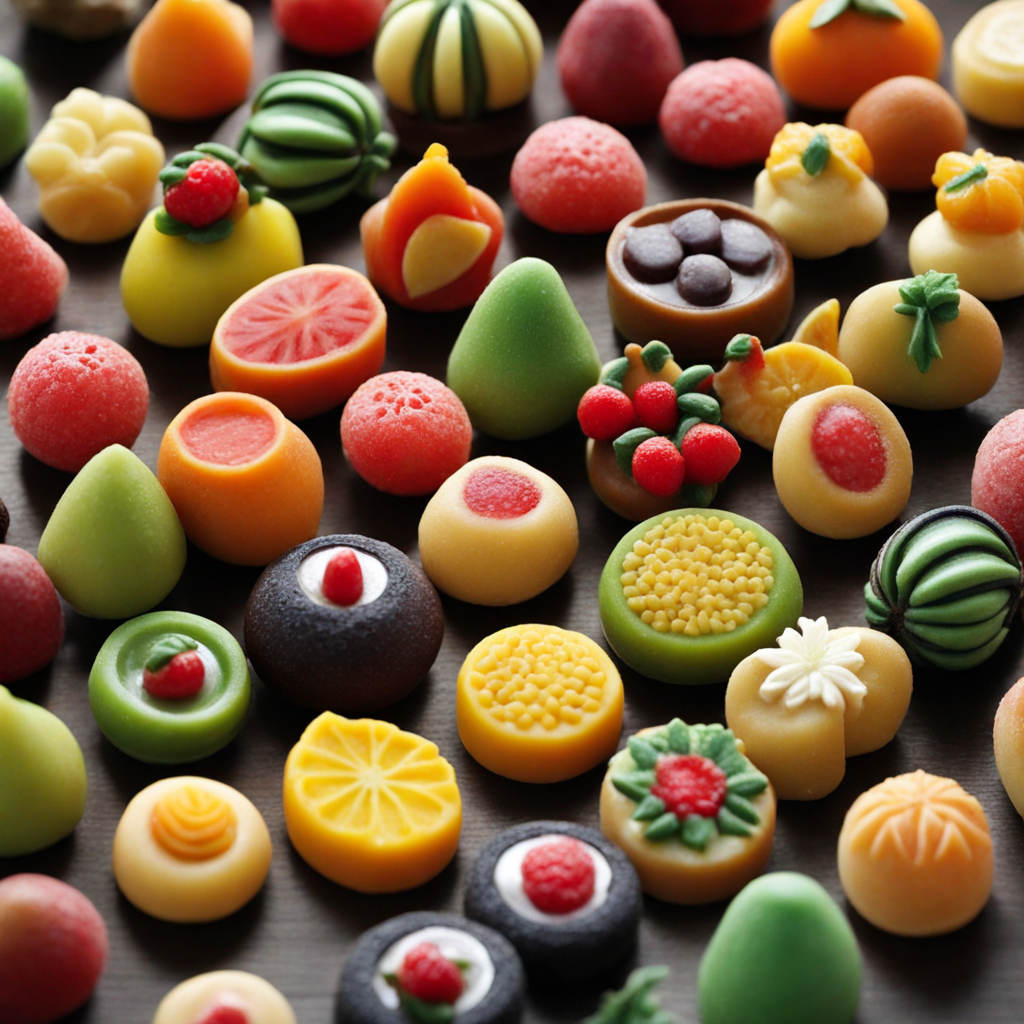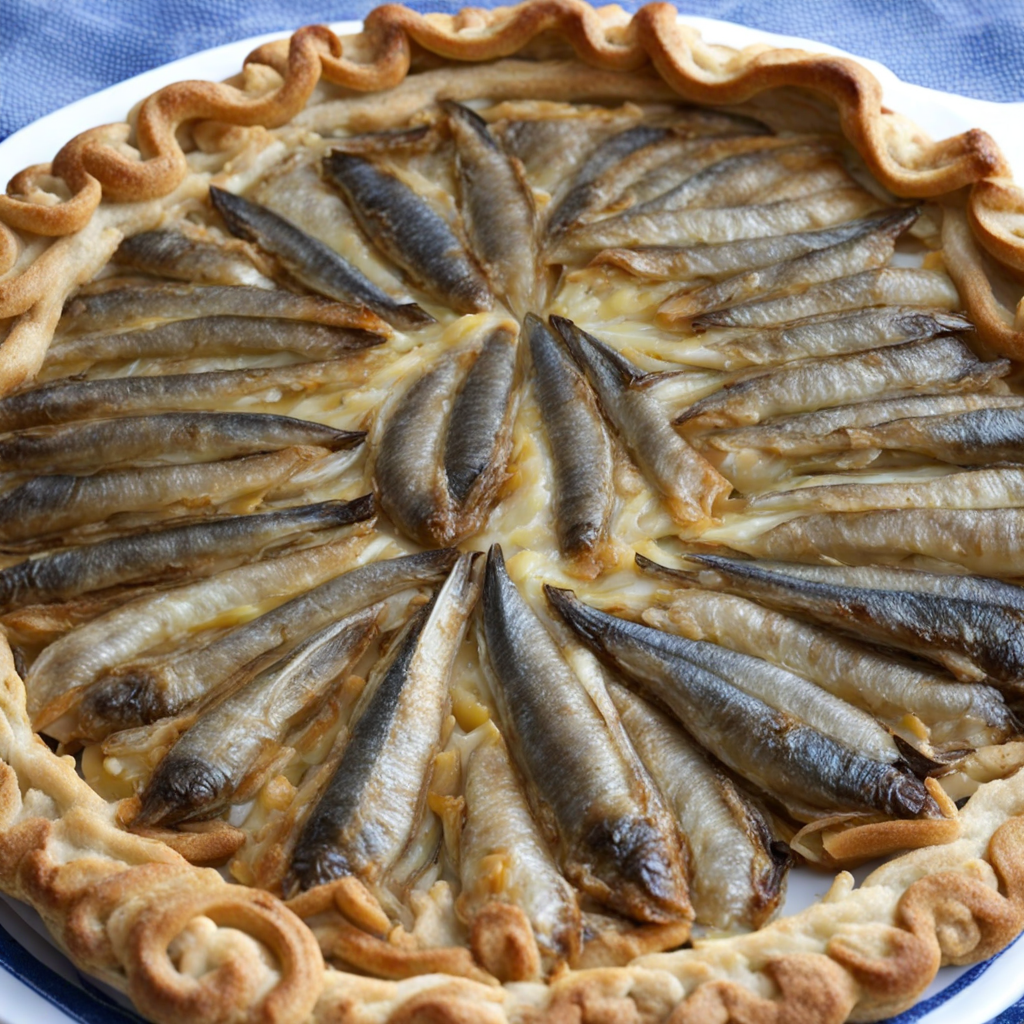Rhubarb Cake
Rhubarb Cake, a delightful Estonian treat, embodies a perfect balance of tartness and sweetness. The star ingredient, rhubarb, is a perennial vegetable that lends its distinct tangy flavor to the cake, making it a refreshing choice for dessert lovers. The cake itself is typically moist and tender, often made with a buttery batter that complements the rhubarb's zing. A dusting of powdered sugar on top adds a simple yet beautiful finish, inviting you to savor each bite while enjoying a cup of coffee or tea. This cake is not just a seasonal delight; it showcases the Estonian tradition of utilizing local ingredients. During the rhubarb season, which usually peaks in late spring to early summer, home bakers and patisseries alike whip up this cake to celebrate the harvest. The preparation is straightforward, allowing the natural flavors of the rhubarb to shine through. Some variations might include a crumble topping or a hint of vanilla, enhancing the overall flavor profile without overpowering the rhubarb's unique taste. As you delve into a slice of Rhubarb Cake, you’ll experience a delightful contrast between the soft, fluffy cake and the slightly chewy, tart pieces of rhubarb. Each mouthful is a journey through the rustic landscapes of Estonia, bringing forth a taste that is both nostalgic and invigorating. It's a cake that not only satisfies your sweet tooth but also connects you to the rich culinary heritage of Estonia, making it a must-try for any adventurous food enthusiast.
How It Became This Dish
The Sweet and Tangy Journey of Rabarberikook: Estonia’s Beloved Rhubarb Cake Rabarberikook, or rhubarb cake, is a cherished Estonian dessert that encapsulates the essence of seasonal cooking, local ingredients, and the cultural heritage of a small but vibrant nation. This delightful cake, characterized by its sweet and tangy flavors, has a rich history that reflects the agricultural practices, culinary traditions, and social changes of Estonia over the centuries. #### Origins of Rabarberikook Rhubarb, the star ingredient of Rabarberikook, is believed to have originated in Asia and was first cultivated for medicinal purposes. It made its way to Europe in the 17th century, primarily through trade routes. By the time it arrived in Estonia, the region was influenced by various cultures, including German, Swedish, and Russian, each contributing to the culinary landscape. In Estonia, rhubarb found a suitable climate for growth, thriving in the cool northern temperatures and fertile soils. Traditionally, it was one of the first crops to emerge in spring, symbolizing the end of a long winter and the arrival of fresh produce. As Estonians began to embrace rhubarb in their cooking, it became a staple ingredient in both sweet and savory dishes. Rabarberikook emerged as a popular way to utilize the tartness of rhubarb, balancing it with sugar and flour to create a comforting dessert. #### Cultural Significance Rabarberikook is more than just a cake; it is a symbol of Estonian identity and community. The dessert is often associated with family gatherings, festive occasions, and seasonal celebrations. During the spring and early summer months, when rhubarb is at its peak, families across Estonia prepare this cake to share with loved ones. It embodies the spirit of sharing and togetherness, reflecting the Estonian value of community. Moreover, Rabarberikook is a representation of Estonian resilience and adaptability. Throughout history, Estonia has faced numerous challenges, including foreign occupations, wars, and economic hardships. In times of scarcity, home cooks found ways to create delicious dishes from humble ingredients. Rabarberikook, with its simple components, became a go-to dessert that could be made with minimal resources, allowing families to enjoy a sweet treat during difficult times. #### Development Over Time The traditional recipe for Rabarberikook has evolved over the years, adapting to changes in ingredients, cooking methods, and tastes. Early versions of the cake were likely quite simple, consisting of a basic batter topped with rhubarb. As Estonian cuisine began to modernize in the late 19th and early 20th centuries, new techniques and ingredients were introduced, leading to variations of the classic recipe. In the early 20th century, the influence of German baking traditions became apparent in Estonian kitchens. Cakes began to incorporate more elaborate techniques, such as the use of yeast, cream, and various spices. Rabarberikook was no exception; it started to feature a more refined batter, often enriched with butter and eggs, resulting in a lighter, fluffier texture. The incorporation of various toppings, such as streusel, nuts, or even meringue, added layers of flavor and texture to this beloved dessert. The post-World War II era brought about significant changes in Estonian society and cuisine. The Soviet occupation had a profound impact on food availability, leading to a reliance on local produce and a revival of traditional recipes. During this time, Rabarberikook remained a popular choice among home bakers, celebrated for its simplicity and deliciousness. Recipes were passed down through generations, with families often adding their own twists, such as incorporating vanilla or cardamom for a unique flavor. In recent years, with the rise of the farm-to-table movement and a renewed interest in traditional foods, Rabarberikook has experienced a resurgence in popularity. Chefs and home bakers alike have embraced the cake not only for its nostalgic value but also for its versatility. Contemporary variations of Rabarberikook now include gluten-free options, vegan adaptations, and even fusion recipes that blend Estonian flavors with international influences. For instance, some modern bakers experiment with using almond flour or coconut milk, catering to diverse dietary preferences while maintaining the essence of the original dish. #### Rabarberikook Today Today, Rabarberikook is celebrated in Estonia as a quintessential spring and summer dessert. It is commonly served at cafes, restaurants, and bakeries across the country, often accompanied by a dollop of whipped cream or a scoop of vanilla ice cream. Home bakers continue to honor traditional recipes while also experimenting with new interpretations, ensuring that this beloved cake remains a fixture in Estonian culinary culture. Culinary festivals and local markets often showcase rhubarb-based products, with Rabarberikook taking center stage. In 2023, for instance, the annual Rhubarb Festival in Tartu featured a competition for the best Rabarberikook, drawing participants from all over Estonia. This event not only celebrates the cake but also emphasizes the importance of local ingredients and sustainable practices in Estonian cuisine. The resurgence of interest in traditional Estonian foods has also led to a greater appreciation for regional variations of Rabarberikook. Different families, towns, and regions have their own takes on the recipe, resulting in a rich tapestry of flavors and textures. This diversity is a testament to the creativity and resourcefulness of Estonian home cooks, who continue to innovate while honoring their culinary heritage. #### Conclusion Rabarberikook is more than a simple dessert; it is a reflection of Estonia’s agricultural roots, cultural identity, and culinary evolution. From its humble beginnings as a way to utilize abundant rhubarb to its status as a beloved springtime treat, Rabarberikook tells the story of a nation that values community, tradition, and resilience. As it continues to evolve and adapt in contemporary kitchens, this delightful rhubarb cake remains a symbol of Estonian heritage and a sweet reminder of the joys of seasonal cooking.
You may like
Discover local flavors from Estonia


